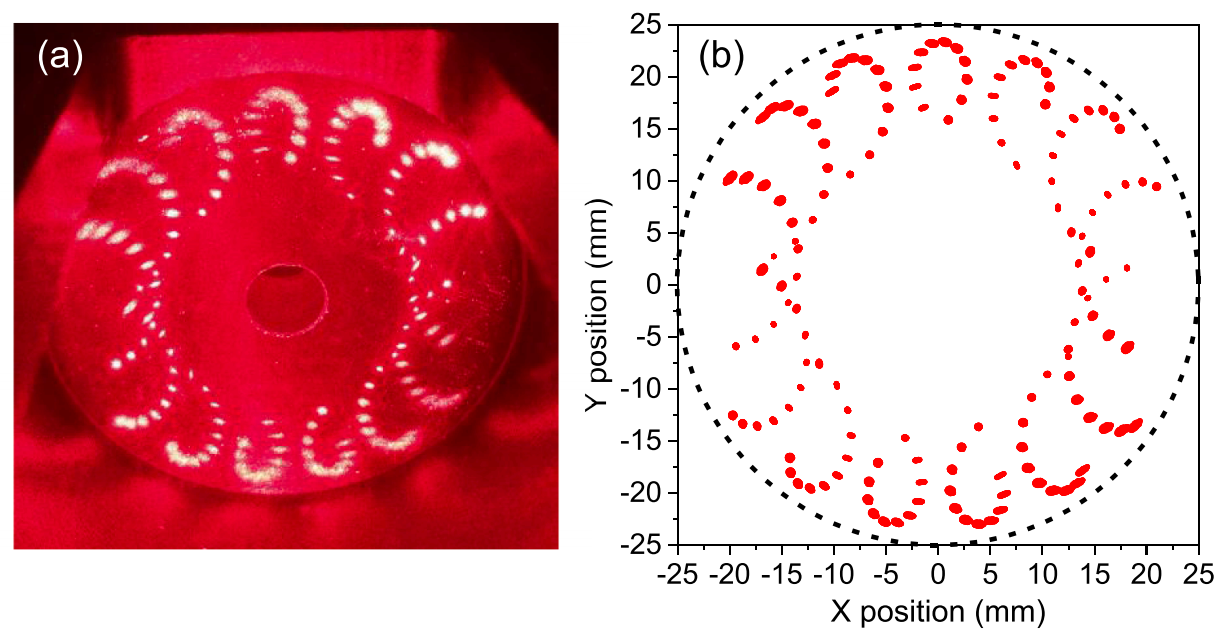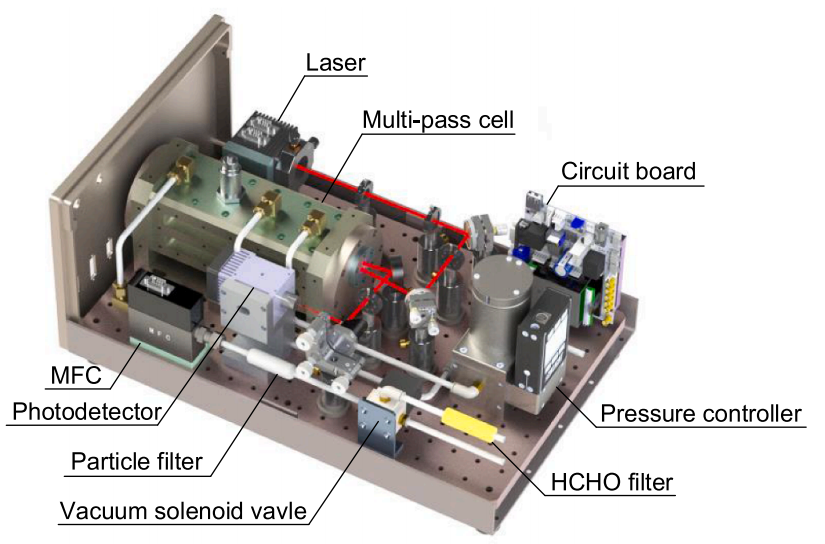
Recently, a group of researchers led by Prof. ZHANG Weijun from Hefei Institutes of Physical Science (HFIPS), Chinese Academy of Sciences (CAS), developed a highly sensitive portable laser absorption spectroscopy formaldehyde (HCHO) sensor using a compact spherical mirror multi-pass cell.
The research result was published in Sensors and Actuators B: Chemical.
HCHO serves as a crucial gaseous pollutant. In atmospheric chemistry, HCHO acts as a vital intermediate in the oxidation of both artificial and natural volatile organic compounds (VOCs), contributing to our understanding of photochemical pollution formation mechanisms. Excessive formaldehyde levels in indoor environments are known to be a major risk factor for cancer, particularly leukemia. Therefore, real-time monitoring of atmospheric formaldehyde is essential for studying atmospheric pollution chemistry and its potential health impacts.
In this work, a compact optical multi-pass cell with high fill factor was proposed to meet the development needs of miniaturized, fast-response and high-sensitivity TDLAS instruments. The 46 × 28 × 16 cm3 sizes made it easily tranpotable.
"We have carried out some relevant work as early as 2019," said Prof. ZHAO Weixiong, the corresponding author, "a novel spherical mirror cell with a long optical path length was used in a mid-infrared tunable laser absorption spectroscopy (TDLAS) device for atmospheric formaldehyde measurements."
Building upon the previous experiment, further optimizations were made in this study.
The key innovation lied in the design of a compact improved spherical mirror multi-pass cell, consisting of two 5-cm diameter spherical mirrors separated by 17.7 cm. The optimized design ensures the long absorption path length and help improve the compactness of the device.
Another notable features of this sensor was its short sampling response time, taking less than one second. This allowed for the effective application of the rapid spectral background subtraction technique, effectively suppressing optical fringes that may interfere with measurement sensitivity.
"This work laid the foundation to further develop portable handheld or vehicle formaldehyde detection devices", said Dr. FANG Bo, first author of the paper.

Figure 1. Beam patterns of the compact optical multi-pass cell. (Image by FANG Bo)

Figure 2. Configuration of the developed formaldehyde sensor. (Image by FANG Bo)

Figure 3. Rapid background subtraction and detection limit. (Image by FANG Bo)